The Great Bathtub Buying Guide

After those long, hard days, there is nothing better than a nice, relaxing soak to ease those aches and unwind. Whether the existing bathtub is looking a bit downtrodden, or a recent luxury hotel stay has provided inspiration to invest in a bathroom upgrade including a tub, if now is the right time to shop for a new one then there is no better place to start your journey than with this guide.

It covers everything important to help make the right buying decision. After all, the bathtub can be one of the biggest outlays of any bathroom space. As such, it is important to understand the various types, materials, shapes and sizes to help tackle those key question marks, and find the perfect match for any bathroom space.
What is A Bath, Who Invented It & What Do They Do?
While the social history is not actually an important factor in buying one, it does give a rather interesting insight into how the modern-day bathtub was arrived at. The notion of bathing has been around for millennia with the Indus Civilisation, Ancient Greeks and Romans all having their own versions of private and public bathing. The aim of bathing is for personal hygiene reasons; however, this hasn’t always necessarily been the case or necessarily believed. Many of the historical bathtubs that existed required lots of work being made from wood, and the warming and drawing of water, although exclusively available only really to wealthier people, certainly throughout the early period eras. Many people were skeptical throughout these times, believing that regular washing was in fact detrimental to health.
It wasn’t until the turn of the 19th century that things started to change with wooden baths being replaced by copper baths, and overall better sanitation. The claim as to who created the first commercial bathtub – many sources claim that it was the Kohler Co., while others suggest it is the Standard Sanitary Manufacturing Company – is open to debate, however, it did lead to the design of more comfortable baths, complete with clawfoot legs like is seen on more traditional-styled bathtubs today. One thing that is certain is that it kicked off a revolution in bathroom items, and the household bathtub, evolving into fiberglass, acrylic and more from the mid-20th century.
Obviously, in contemporary terms the modern bathtub is used for maintaining good personal hygiene, and has been demonstrated to have a wealth of benefits both physically and mentally.
Fitted or Freestanding Baths?
So, diving into the world of modern bathtubs, when starting to shop around it is vital to learn, and understand, the key types and the distinctive differences between them. This starts with the type of installed bathtub that is desired, and then the design and material differences, which will be covered later on in this guide.
However, the first area to think about is whether it is a fitted bath or freestanding bath that is desired.
Fitted Baths
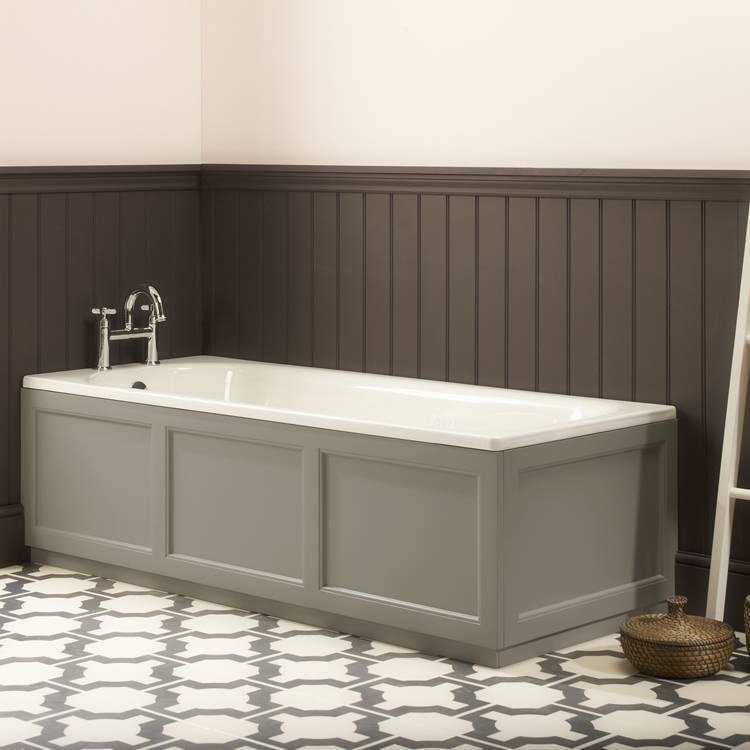
Fitted baths are usually situated into a fixed area. They cannot be moved around a room, and generally are installed recessed into a surface or within a built frame, which is then boxed and tiled in, or fitted with bath panels to hide away the unsightly pipework underneath.
By and large, many people consider these to be standard bathtubs that are seen in the everyday home. In fact, it is only in the last decade or so with the advent of social media that many people have had the aspiration to pursue more luxurious and stylish bathroom designs. They are affordable, simple by design, and perfect for fitting against angular walls and great for use by everyone, including families and children. Additionally, as they are so common and popular, they come in a large choice of sizes, which makes them ideal for both small and large bathrooms alike, meaning that if space is a constraint, the humble bath does not have to be a pipedream.
Freestanding Baths
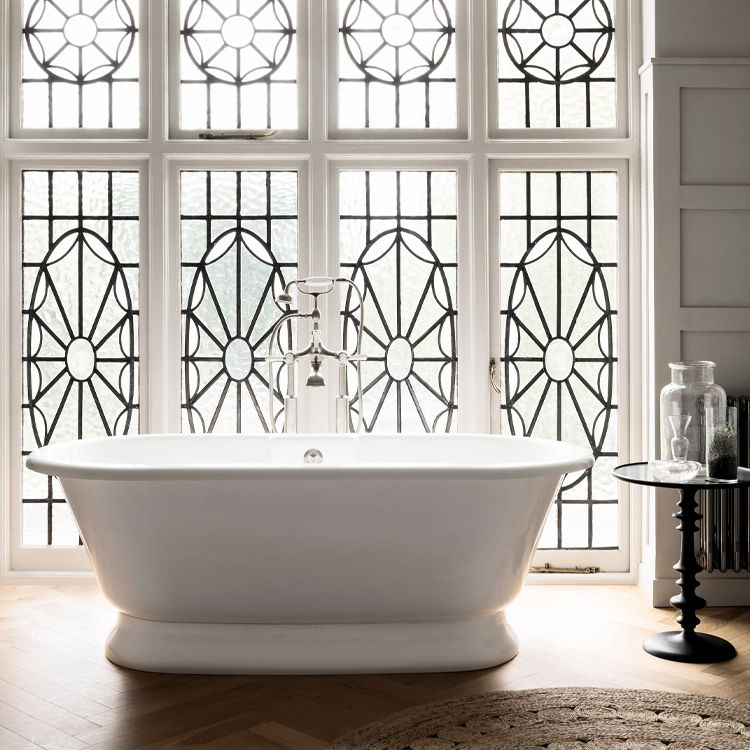
Freestanding baths, also called stand alone baths, are bathtubs that use feet, legs or the bath design itself to stand up without need of a frame or legs. Due to this, they are incredibly versatile and can be installed anywhere within a bathroom with plumbing and pipework generally coming from the floor itself. They have really grown in demand over the last decade or so, becoming a focal point of bathrooms, a real statement piece, and social media hook. While some designs take inspiration from the early claw foot tubs of over a century ago, they have evolved into numerous stylish, colorful and original designs. Our freestanding baths buying guide covers these in more detail.
Types of Bathtubs
Within these two main categories, there are a number of different designs and types to look at. In brackets is the type of bath they fit into, and how they can be purchased:
Shower Baths & L, D, J, P and B Shaped Baths (Fitted or Freestanding)
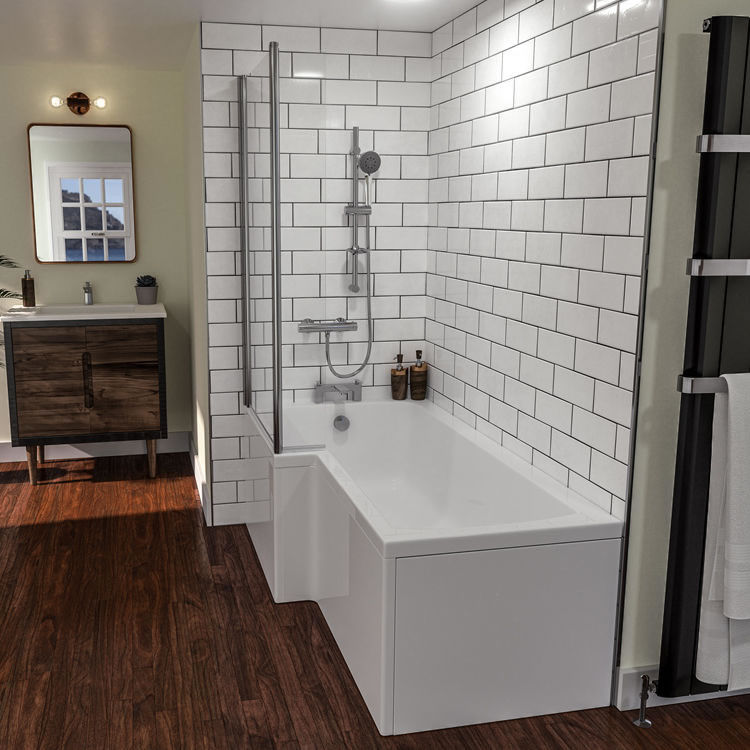
Shower Baths come in a rich variety of shapes and sizes. From standard straight, rectangular or squared baths, there are also five different shaped baths named after letters of the alphabet (our shower baths buying guide explains more about these). They are so-called as they provide both a bathing area and showering area, making them the perfect compromise to avoid any bathroom disputes. Generally, they come with a bath shower screen, or have the capability to be installed with one compared to other bath types, ideal for protecting against splashing and water leaking on to floors.
These are mostly fitted and are ideal for those on a budget or those looking for a simple, straightforward design to fit into any average bathroom space. There are a select number of freestanding shower baths, however, a lot of these tend to come with more traditional designs with feet or legs.
Inset, Drop In, & Recessed Baths (Fitted)
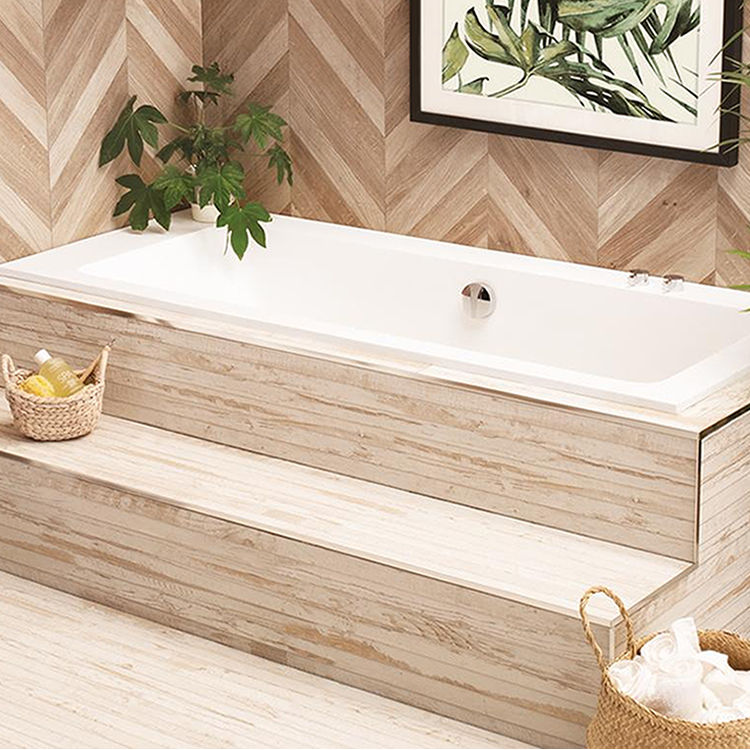
Inset Baths, or Drop In Baths, are slightly different to shower baths but look and operate in the same way. Whereas shower baths are designed to look all as one with matching panels and a very clean aesthetic, inset baths are ‘dropped in’ to a pre-built or existing surface. This can even include floors if this is possible. The bath itself is completely hidden from view with only the rim or lip on show. It is this look of the rim overhanging or fixed on the surface, which is why they are called inset baths.
Corner & Offset Bath (Mainly Fitted, rare Freestanding)
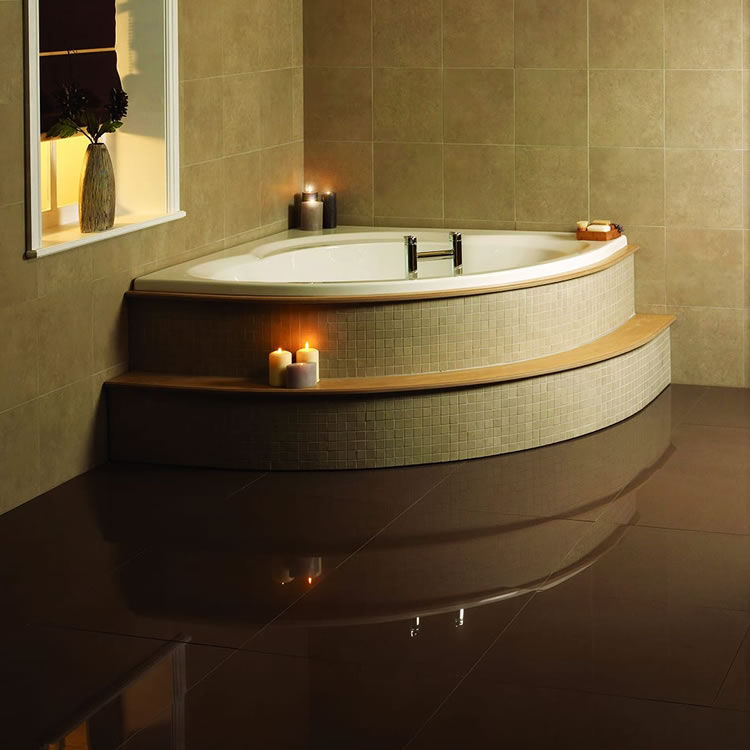
Corner baths tend to be smaller baths with an angular, 90-degree side and back and a smooth, curved front, much like a quadrant or offset-quadrant shape. By definition, any bath that could theoretically fit into a corner, such as shower baths, also fall into this category although many would focus more on the former description. These are all fitted, although there is the rare freestanding corner bath, that is specifically designed to be located and fitted against a wall.
Spacesaver Bath (fitted)
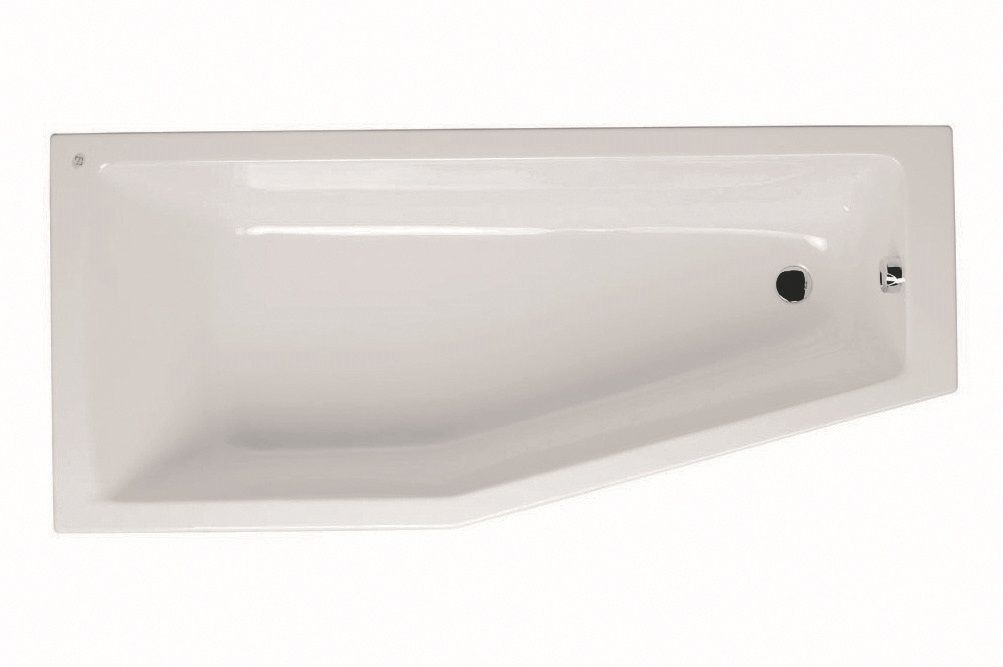
Spacesaver baths do what they say on the tin: they are designed to help save space. They are shaped like regular baths but instead of being rectangular, one side inverts inwards at an angle or curve to create a narrow end, and generate extra space. They aren’t really designed for lying in, and are simply there for a quick soak or sitting in.
Slipper Bath (Freestanding)
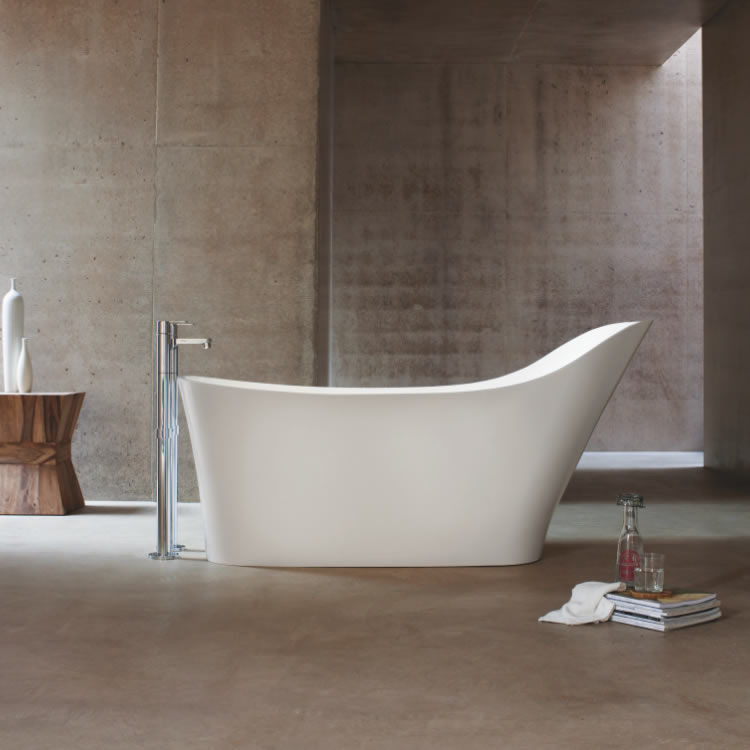
Slipper Baths are given their name due to looking exactly like a slipper. One side has a larger height for relaxing into, while the foot end is smaller. Due to this, they are only suitable for usage by one person at a time (we will come on to single ended and double ended later on).
Boat Baths/Bateau Baths (Freestanding)
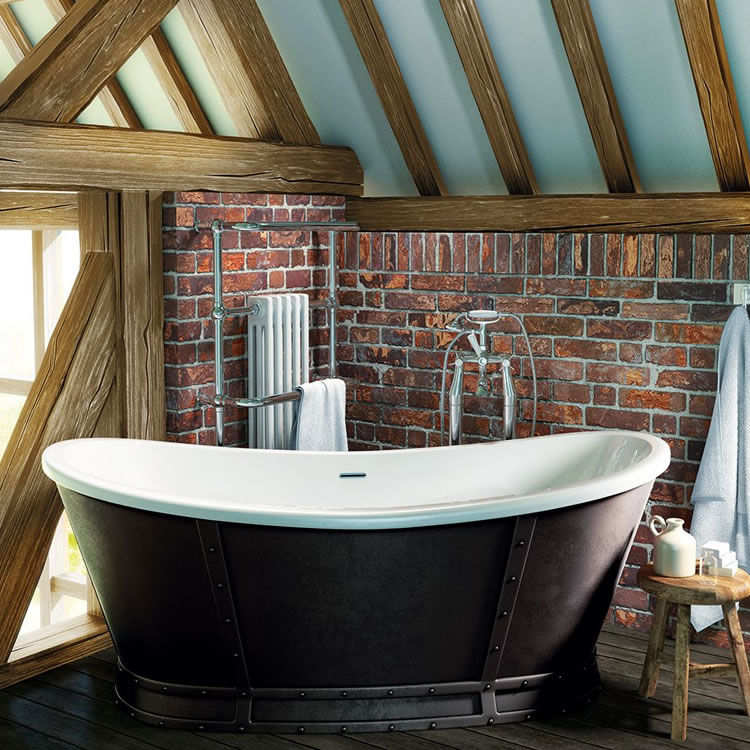
Boat baths, or bateau baths (which is French for ‘boat’), are freestanding baths that have a rim or edge that is higher at either end, and curves downwards in the middle (think like the surface of a Pringle crisp!). They have their name because the shape looks distinctively like the edge of an old boat. They are double-ended baths meaning they can be used solo or by two people with either end comfortable enough to soak from.
Roll Top Baths (Freestanding)
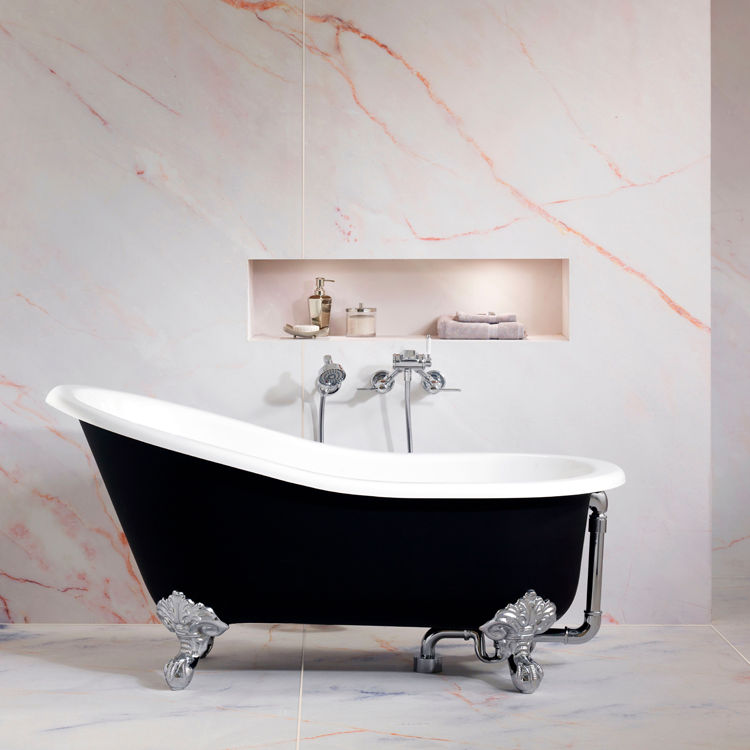
A more traditionally-styled freestanding bath, Roll Top Baths are ones which have a rim that curves up and back over itself. This is one of the most common, recognizable and popular features that people notice when talking about a freestanding bath.
Standard Freestanding Baths
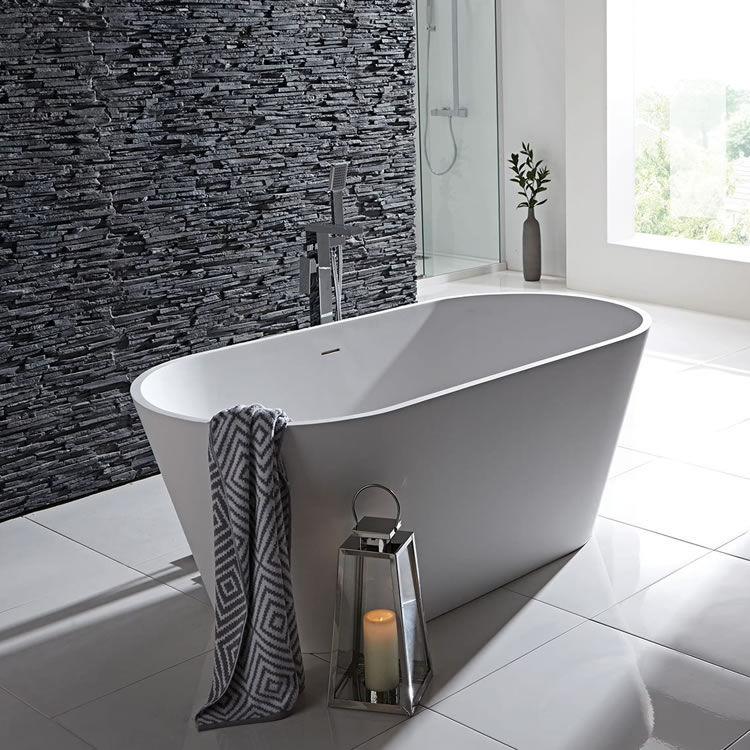
All of the above freestanding baths have distinctive designs or features, however, there are a number which feature standard modern or contemporary designs. These are simple and minimalist, not overstated, and don't have any fancy decorative designs. They can be oval or rounded, like a large bowl, or squared freestanding baths by design. They are pretty universal as well with options available in both single-ended freestanding tubs, only suitable for 1 person, or double-ended freestanding baths, capable of being used from either end or by two people. This offers a great amount of choice for any buyer.
Back to Wall Baths (Freestanding)
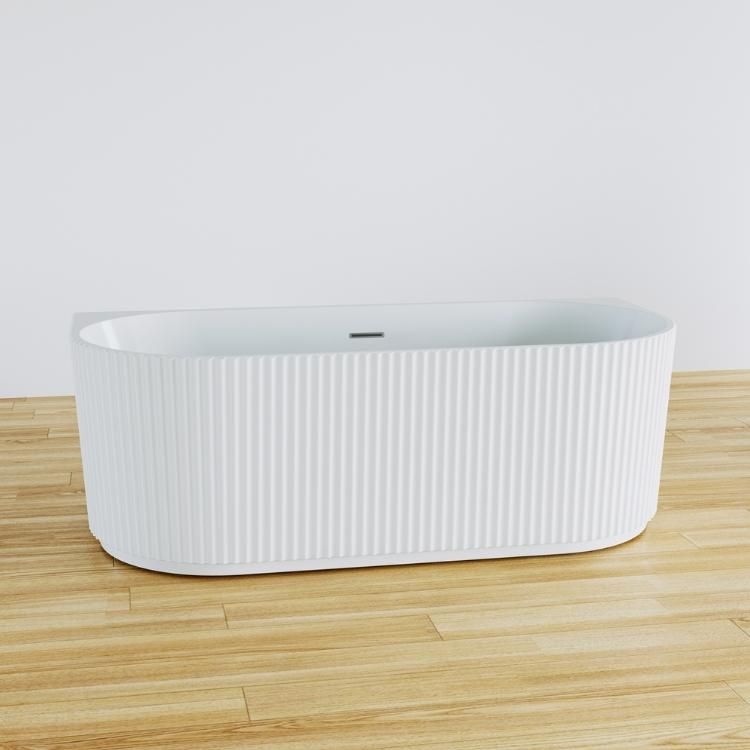
Back to Wall Baths, or BTW baths for short, are baths that are designed to be fully flush against a wall. The back has a straight edge, while the front curves around to create a D shape. There are some more squared designs, however, with the taps or overflow being positioned at the back rather than an end, it means the bath can be fitted against any flat wall than having to be fitted into a corner or against adjacent walls.
Whirlpool Baths & Hot Tubs (Fitted)
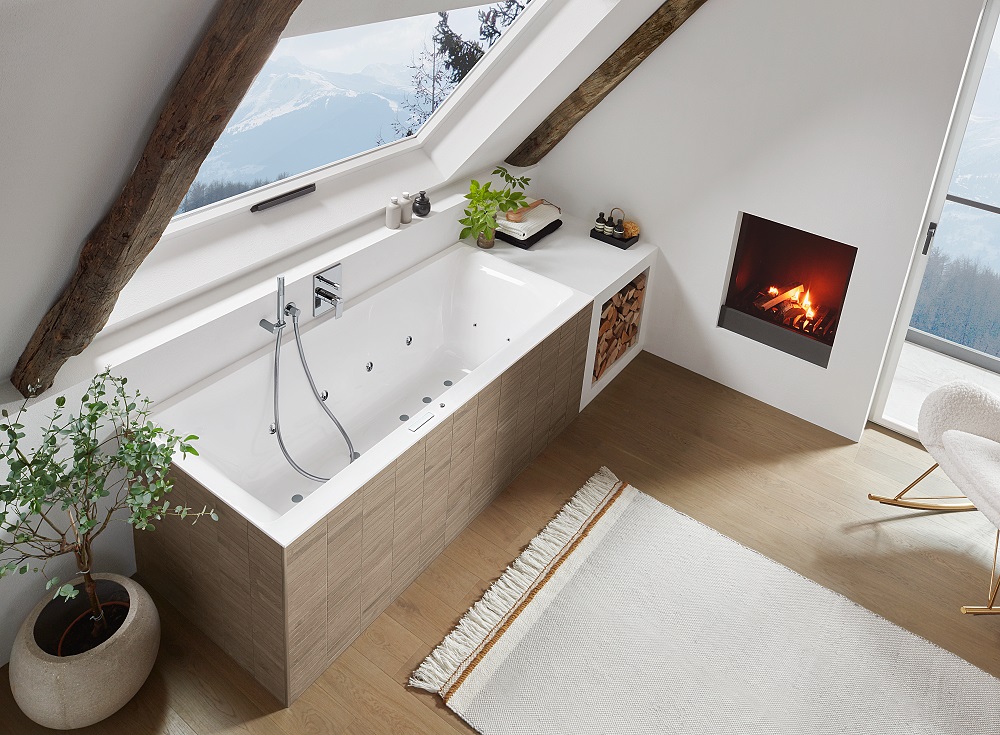
If a spa-like touch, or even an outdoor glamping experience, is what you are after, then there are some baths that have whirlpool functionality. These are inset with jets that makes the water bubble, much like a hot tub. We have also included hot tubs in this section, as they are theoretically a kind of bath (almost!).
Sitz Baths/Hip Baths (Freestanding)
Not really commonplace here in the UK but Sitz baths, also called hip baths, are tiny baths used to sit in for health reasons to help clean the perineum and bottom.
Japanese Deep Soaking Tubs (Fitted or Freestanding)
Again, not really used here in the UK, however, worth a mention are Japanese Deep Soaking Tubs. These are bathtubs that have high-edges – like a hot tub without the bubbles – that are used for sitting in rather than bathing in, where the user is immersed up to shoulder or chest height.
Single Ended or Double Ended – What Are They & What’s The Difference?
Covered in the earlier section are references to single ended or double-ended, so at this point, it seemed a good idea to give an idea of the differences and how to recognize the difference.
Firstly, single ended baths are any bathtub that is intended for use by one person, and is designed to be bathed in at only one end. As such, all shower baths are single-ended baths, as are Slipper Baths, Sitz Baths and some Japanese Soaking Tubs (although as mentioned, these aren’t really found here in the UK except for specialist providers). All others baths can come as single or double-ended baths.
Double-ended baths are, therefore, a bath that can be used from either side giving a choice of positional relaxation, just in case you fancy a change. Alternatively, if it is a matter of convenience or romance, they can also be used by two people at once, ideal for those romantic evenings clinking a glass of wine with a partner, or simply cuddling up with someone.
Recognising the difference is fairly easy, however, some companies like to throw out a curveball occasionally by moving away from this. Single Ended baths have any overflow, waste or tap holes located at one end. Double ended baths usually have these located centrally on the back/side of a bath. It is worth checking this before purchase if a preference is in mind, as some designs can mean that while they look double-ended, they can only be bathed in from one end.
Can You Get Disabled Access Baths?
Yes, disabled access baths are available. Also called ‘walk-in baths’, these feature a low-edge, and side access through a leak-proof door so people can step into the bath without having to climb in. However, they are only really provided by specialised companies, and also provide any other essential equipment needed for disabled or elderly people to be able to enjoy a bath. Some every day retailers may also supply them but if disabled access is what is required, it may be worth talking to a specialist who can help accommodate any specific requirements.
What Materials Are Baths Made Of?
The variety of options doesn’t just stop there either. Moving on from the actual types of baths available, they also come in numerous different material finishes, each of which has their own pros and advantages.
Acrylic Baths
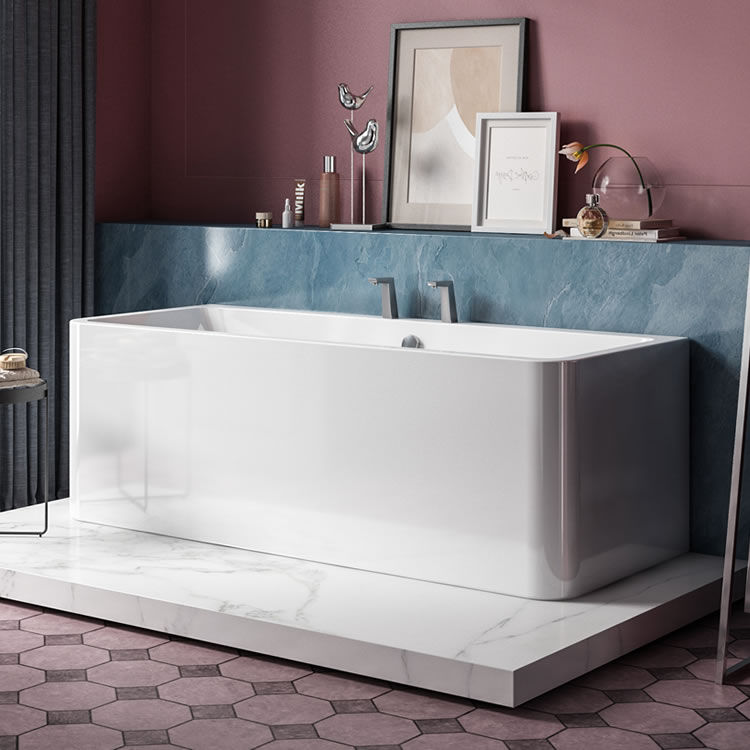
Acrylic baths are made from a sheet of acrylic, which is usually bonded around a wooden bushboard and fiberglass to strengthen it, making it durable and to help retain heat. The thickness of acrylic tends to vary between manufacturers between 4mm to 8mm. Reinforced or strengthened versions of baths are available with extra fiberglass with some brands. Our acrylic baths guide covers more about this material.
Steel Baths
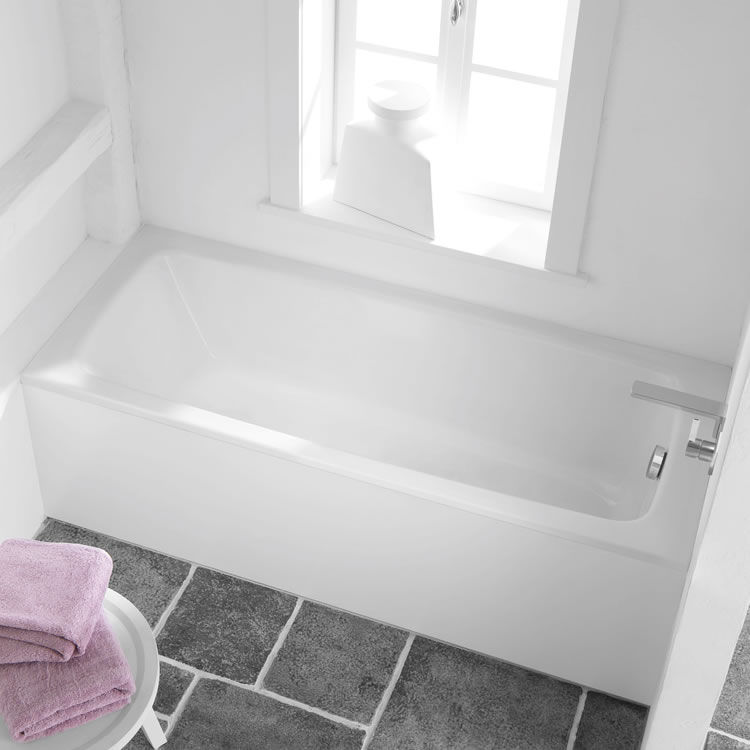
Steel baths are made by a sheet of this material – usually 2-3mm thick - being pressed into shape, and then coating with enamel. This provides a strong, and in some cases stain and scratch-resistant material, that conducts heat very well for warming baths.
Read more about the pros and cons of steel vs acrylic here.
Stone, Stone Resin and Solid Surface Baths
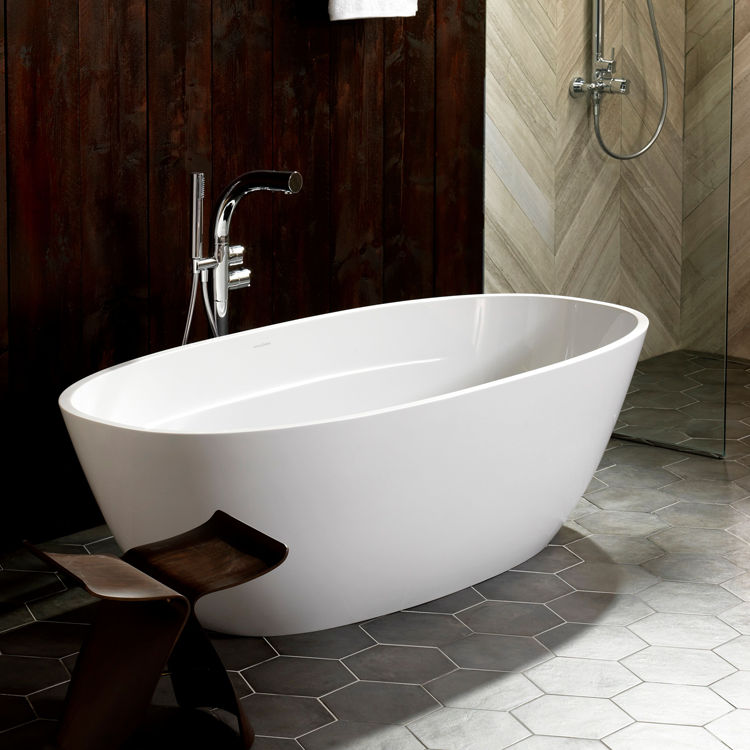
Mainly found in freestanding baths, stone resin baths are made from a mix of natural stone (such as limestone) and resin, which is a substance used to make plastic. Some brands have their own trademarked names for the type of material, however, it makes for a durable material with claims of being a few times stronger than acrylic, warm and easy-to-clean. There are also a few solid surface bathtubs as well, which is a mixture of minerals and polyester resin.
Cast Iron
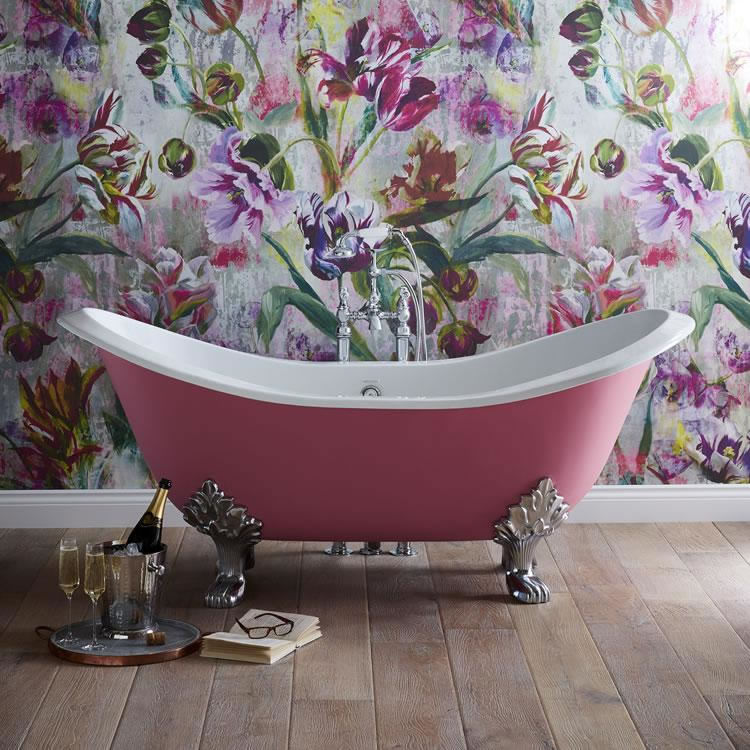
Mainly used for the old-style traditional baths with bath legs, cast iron baths are created by shaping the iron to a bath mould, which is then coated in an enamel finish, just like steel baths.
Copper, Tin and Nickel Baths
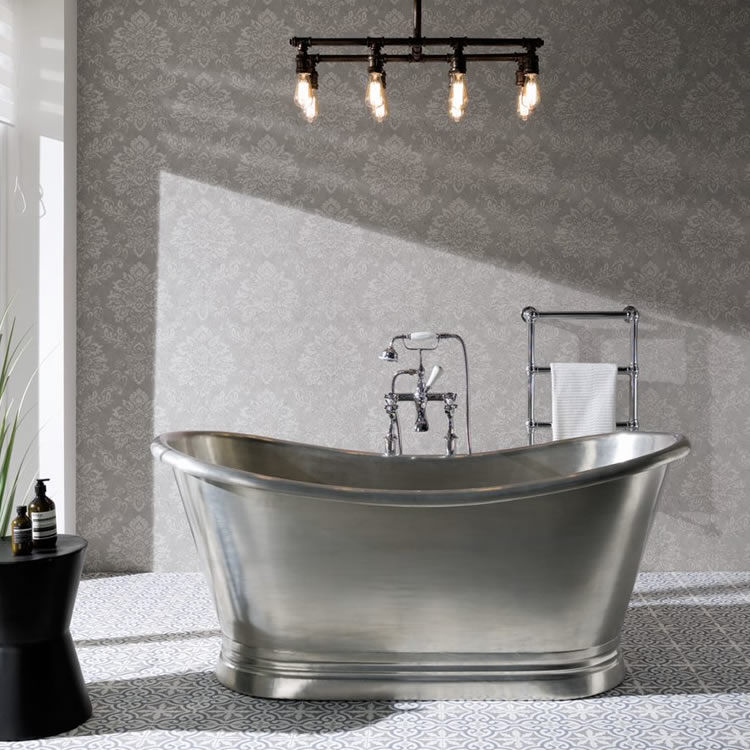
Also available are a number of baths made from, or finished in, other metallics such as copper, tin and nickel, providing different colours but for an authentic traditional look from period-style, and for eye-catching centerpieces. Like steel and iron, the metallic material makes them excellent conductors of heat, and copper especially has the advantage of retaining heat longer than others.
Are All Baths White or Can You Get Coloured Baths?
While the majority of standard baths are commonly white, there are a number of baths that are coloured or painted.
Firstly, let’s look at the materials. The reason that a lot of bathroom products come in white normally comes down to a few factors: cost to manufacture, association with cleanliness and hygiene, and the fact that it is a practical colour to keep clean.
Metallics such as copper, tin, and nickel will all resemble the colour of the metal, such as golds, bronzes and silvers, providing an authentic look. Cast iron baths are white inside but the outside is coated with a primer, ready for painting into a colour of your choice.
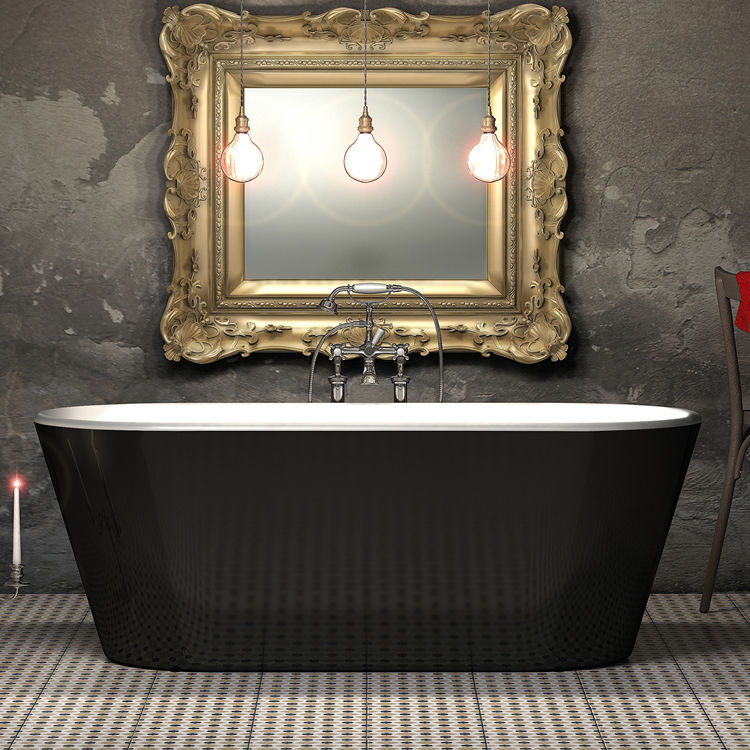
Acrylic and stone baths will more often than not come as white as standard, however, there are many options – certainly in freestanding baths – where black, gold and silver baths are all options. Additionally, a number of companies now offer a painting service using RAL colours or paints from companies such as Farrow & Ball or Little Greene.
As people become more adventurous and expand into different colours, the ability to be flexible with bathtubs is becoming more readily available. So, if a pink bath is something that you have always dreamed of, there’s no reason to hold back!
Alongside this, there are ways of adding colour alongside a white bath. This can include adding coloured bath panels, adding a coloured shower curtain, and even using coloured brassware. Some white bath panels may also be able to be painted after purchase but it may be worth checking with the manufacturer before you do attempt this, as it could end up damaging or even cracking the panel.
What Are The Typical Size Dimensions of Baths & How Much Water Do They Hold?
Baths come in many different sizes to suit and cater for different spaces. The dimensions vary depending on the style and type of bath desired. For example, freestanding baths may be rounded up or down to the nearest ’00mm sizes.
The most common bath size is generally 1700mm in length and varies between 700mm, 750mm and 800mm in width. 1700mm (around 5 ft 6 inches) is suitable for the size of most bathrooms, and is also the length recommended in the Government’s Building Regulations 2010 Merged Approved Documents. The most common bath sizes are:
It is worth mentioning that in the case of freestanding baths, some of these may be obscure dimensions that are rounded up to the nearest whole 50mm or 100mm (e.g. a 1680mm bath may be classified as 1700mm)
When it comes to bath types, these are the most common dimensions you can find for each:
Bath Type | Length | Width |
| Standard Bath | 1400mm-1900mm | 700mm-900mm |
| Shower Bath | 1400mm-1900mm | 700mm-900mm |
| Corner Bath/Offset Bath | 1200mm-1700mm | 700mm-1400mm |
| Inset/Drop In Baths | 1400mm-1900mm | 700mm-900mm |
| Standard Freestanding Bath | 1450mm-1900mm | 700mm-900mm |
| Slipper Bath | 1300mm-1800mm | 700mm-900mm |
| Boat Bath/Bateau Bath | 1500mm-1900mm | 650mm-900mm |
| Roll Top Baths | 1500mm-1800mm | 700mm-900mm |
It is worth noting that the figures supplied above are illustrative of the sizes available most commonly, and there may be the odd exception that falls outside of these dimensions, so it is always worth checking to make sure the sizing is right ahead of purchase.
When it comes to the volume of baths and the water capacity, most of these will fall between 115 litres and 285 litres of water to fill them to the top (though you shouldn’t need do to this), and accounting for displacement, depending on the size and type of bath. Most filling capacities will only need to be filled at most half way, which on average is around 115L.
Is This Water Usage Less Than A Shower – Can They Help Save Water?
In reality, probably not. As baths hold a decent volume of water, which as covered above is around 115 litres, a shower would have to be running for a decent chunk of time to match this.
A lot will depend on the flow rate of the shower, and this will vary based on a combination of factors. Firstly, if the product is only capable of working with a certain water pressure, or has a maximum flow rate it can achieve. Additionally, it will depend on the water pressure of the property plus the length of time that the shower intends to be used.
For most properties with 1 bar or less, it would take around 8-10 minutes of showering to use the same amount of water as each bath. That doesn’t account for the fact that as a bath user, if you like the idea of a long soak or the option of adding more hot water in to keep the temperature up, this will add more water on this figure.
As most showers are about speed and convenience, unless you leave it running before using - (which is inadvisable for a number of reasons including monetarily for water bills (if metered) and heating costs, as well as the wider environmental impacts with water scarcity) – then showers should use less water.
The only other way baths become more comparable or can help save water is if you share baths or re-use bath water (depending on your stance on hygiene) to save overall usage, or fill the bath less.
What Features Do Baths Come With?
Now we have tackled types, sizes, colours and even the eco-friendliness of a bathtub, let’s move on to the practical considerations: the features a bath comes with and whether they are needed or not.
Do All Baths Have Tap Holes?
This comes down to personal preference, but the straight answer is, no, not all baths have tap holes or even require them. A lot of baths will come undrilled so as not to spoil the look of the bath, just in case you don’t actually need them. However, they will be able to be drilled by a fitter or installer to include the amount of holes necessary for your chosen bath taps (with or without shower handset). Many companies do provide the option of having a 0 tap hole bath, or one with tap holes (usually 2 minimum).
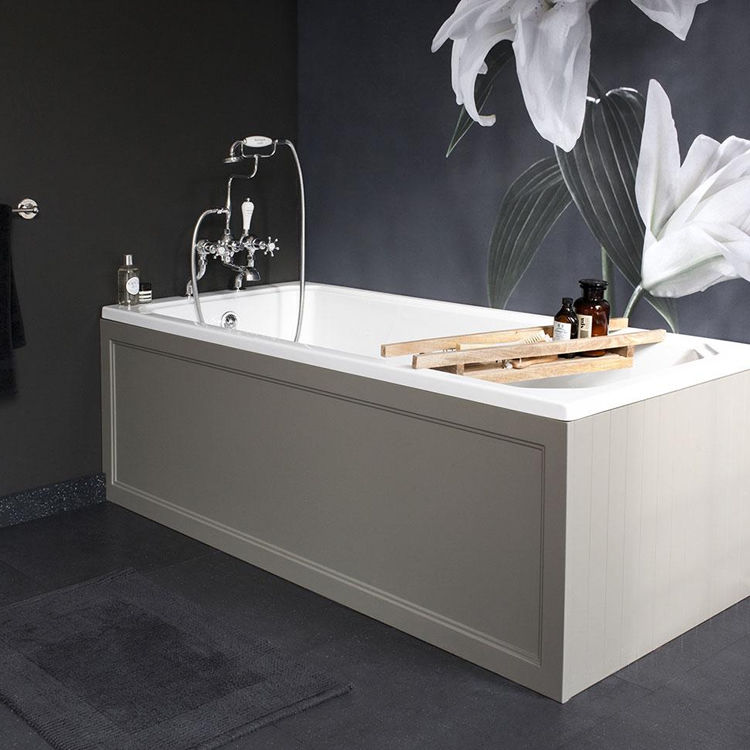
However, this only really matters if opting for deck-mounted taps (this means fitted to the bath itself). If opting for wall-mounted bath taps or a freestanding bath tap (which are installed into the floor), then an undrilled 0 tap hole bath is what is needed. This is preferred by some people because of the clean, tidy and stylish look wall-mounted taps provide.
Baths can be paired with one or two types of taps that require anything from 2 tap holes to 5 tap holes:
- Bath Pillar Taps (separate hot and cold-water taps)
- Bath Mixer Tap (one tap connected to hot and cold water feeds that comes out one spout)
These can be operated by levers or handles (2 tap hole sets), or by bath tap valves and a spout (3 tap hole bath taps). They can be accompanied by a shower handset to form a 4 or 5 tap hole set.
Do All Baths Have Overflows?
No, not all baths have overflows. An overflow is a hole that is situated at one end or on the side of the bath to help prevent flooding. If water reaches this point, the water will escape into the waste pipe and is taken away in the same way as the water after usage. Not all baths have overflows, so if this is the case it is important to check the manufacturer guidance regarding installation. For example, Villeroy and Boch recommend installing a floor drain with some of their baths.
Those baths with overflows will require a slotted bath waste for the water to escape through, while those without overflows require an unslotted bath waste.
Do All Baths Require or Have Legs?
No, not all baths require or have legs. Most of those with legs or feet are traditonally styled baths. However, there are some baths that do come with adjustable bath feet for easier installation.
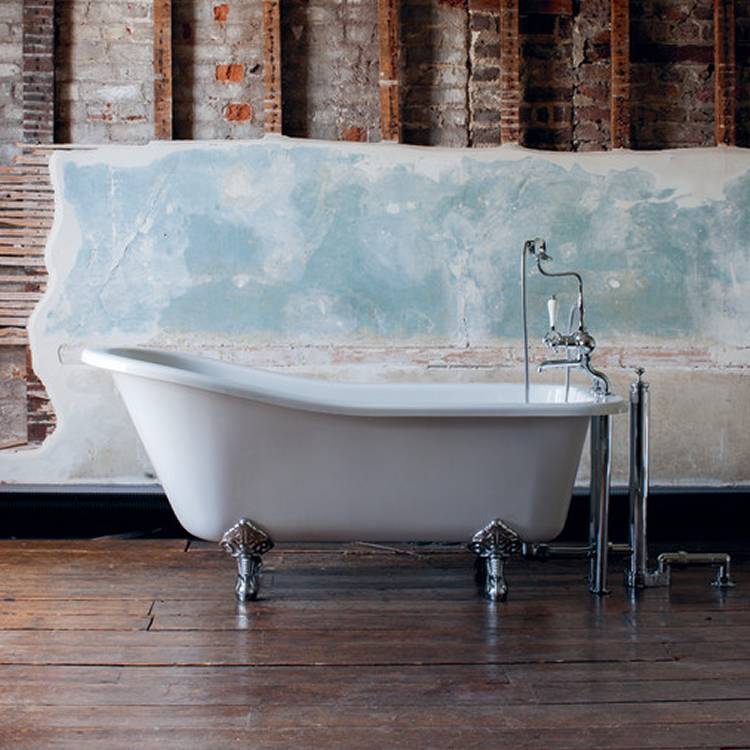
But it really depends on the type of bath and installation. Most standard baths are installed into a frame or recessed into a surface. For freestanding baths, these are usually positioned and sit flat to the ground (except for those period style baths).
What Are Bath Grips And Do I Need Them?
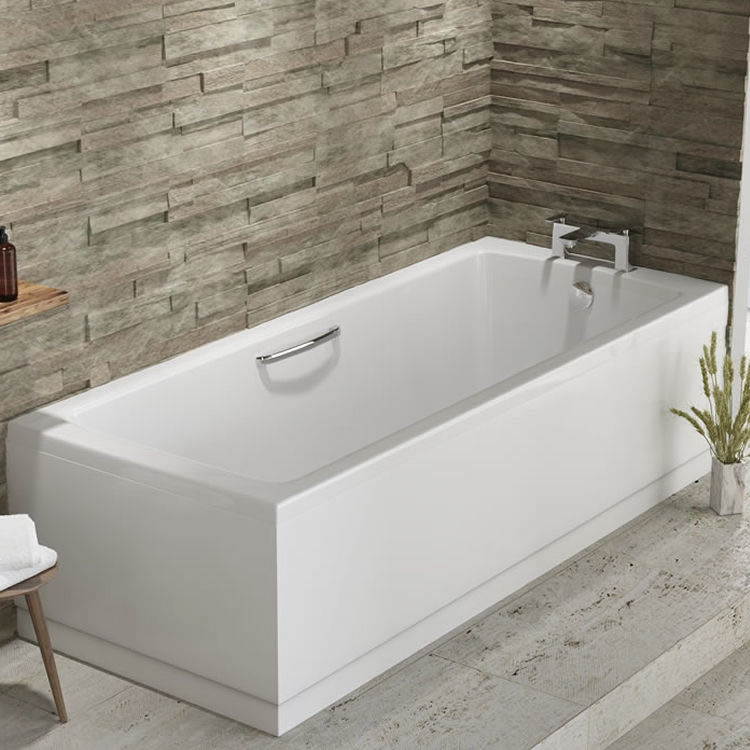
Hand-grips, or bath grips, are handles that are fitted to the bath that are used for easier entry and exit out of a bath, if this is a struggle or mobility may be more difficult for you. This is a matter of preference as to whether these are purchased with a bath or not, and by and large they have a chrome finish. For some people, they are an essential requirement, however, some feel like it makes the bathtub look less aesthetically appealing.
Not all baths have them as an option, so it is worth researching the available types and designs first, if this is something that is of interest.
What is The Lifespan of A Bath And How Long Do They Last?
Baths are such a big investment so it is understandable that many want to get bang for their buck, and good value for money. Since they can get heavy usage, it is important that a good bathtub should provide quality and longevity, as well as style and comfort.
However, like many items, they are not immune to wear and tear over time. The extent of any wear and tear of any product will depend on how much it is used and how well maintained it is.
By and large, most companies will provide a minimum guarantee of anything ranging from 2 years to 25 years (or lifetime guarantees). While these aren’t necessarily representative of the lifespan, they do help provide some reassurance to customers.
The vast majority fall into 5 years and above and with most bathrooms being updated every 7-10 years or so, theoretically most bathtubs will be covered for the majority or all of this period of time.
However, it really depends on the material and cost, with some bath materials being more durable than others. Acrylic tends to be at the lower end of the scale in terms of lifespan and cost, while stone resin and natural stone baths will be built to last a longer timeframe.
Can You Paint Baths Or Update Them At A Later Stage?
For any acrylic or cast iron bath it may be a case that you want to give it a new lick of paint, or simply change the colour if the existing one isn’t appealing to you any more, or looks a bit unloved.
It is possible to update old bathtubs to give a new lease of life but usually only in acrylic or cast iron materials. This will require some work including sanding down the old bath, treating it with a primer, and then applying several coats of paint. It may also require a sealing product to further protect the paint.
It is worth checking this in advance of purchase and before you attempt any work with the manufacturer, if you know who it is, as it could invalidate the guarantee or warranty. They can also best advise on what type of paint to use, what specialist treatments may be required, and how to avoid damaging the product so you need to buy a replacement anyway.
As addressed earlier, it isn’t possible to paint or update a bath panel, so it is strongly advised not to attempt this unless the manufacturer has advised that it can be done.
What Are The Best Baths To Buy?
This is really personal to each individual customer, and it is really hard to give a definitive answer without knowing circumstances.
However, it really comes down to a number of factors:
- Material – if price is a major factor, then acrylic is the most sensible and affordable choice with a variety of options to select from. Other materials may prove to be more expensive
- Type – Standard baths, shower baths or fitted baths are all at a cheaper price point than freestanding baths. So, if a freestanding bath is on your shopping list, then you may have to budget around 3x more at a minimum compared to some standard baths.
- Style/Aesthetic – If looking for something modern then any type of bath is really an option. However, if looking for something more traditional in style – certainly in the period style detailing - then you’re looking towards a freestanding bath.
- Size – By and large, the bigger the bath, the more it will cost. This isn’t always the case as a rule but the likelihood is that more materials means a larger outlay.
- Tap Holes – if you require tap holes, some companies actually charge a little more for the drilling doing so it may be worth checking this before purchase
As such, if you’re on a budget, the best bath for you may be something simple, made from acrylic and smaller in size.
If quality is a major factor, then you’re looking at reinforced acrylic at the lower end of the scale, to stronger materials like stone and steel.
Finally, if the appearance, style, aesthetic and comfort is a major factor, then a wider and larger bath will be best, along with freestanding designs for something more suitable.
However, this guide should comprehensively cover everything to make a great decision for your own personal circumstances.
Are There Any Baths Made Here in Britain?
Unfortunately, the vast majority of baths are imported into the UK from Europe, China and even South Africa. There are some companies that do offer British-made baths directly, or that supply to brands to sell under their own name.
Additionally, some manufacturers also – like BC Designs – also paint or add finishing touches here in the UK to bespoke create these to order, although the main manufacturing takes place outside the country.
Images of Baths
This blog post is littered with examples of bathtubs, however, to provide more inspiration, we have pulled together a top selection of our favourite tubs to show off, just in case you needed some extra inspiration:

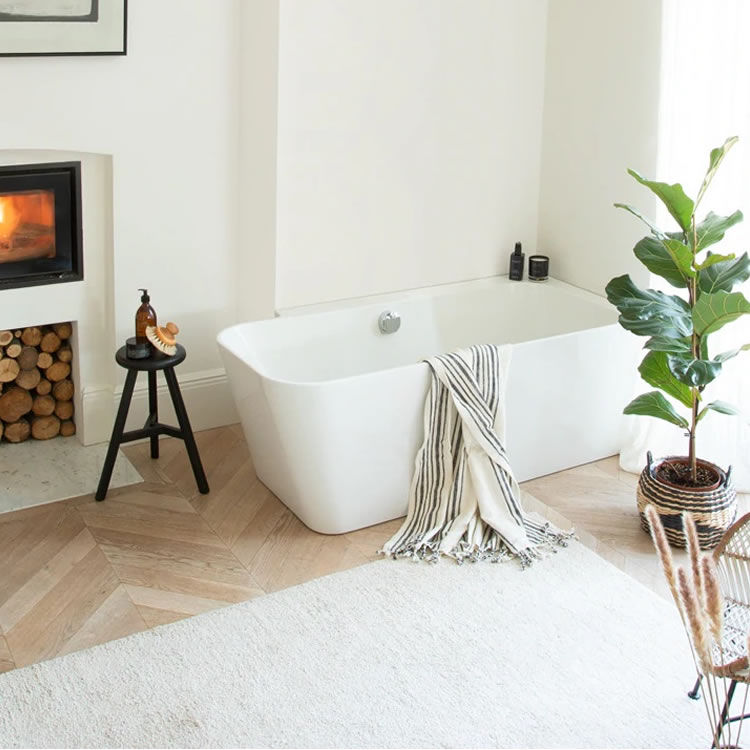
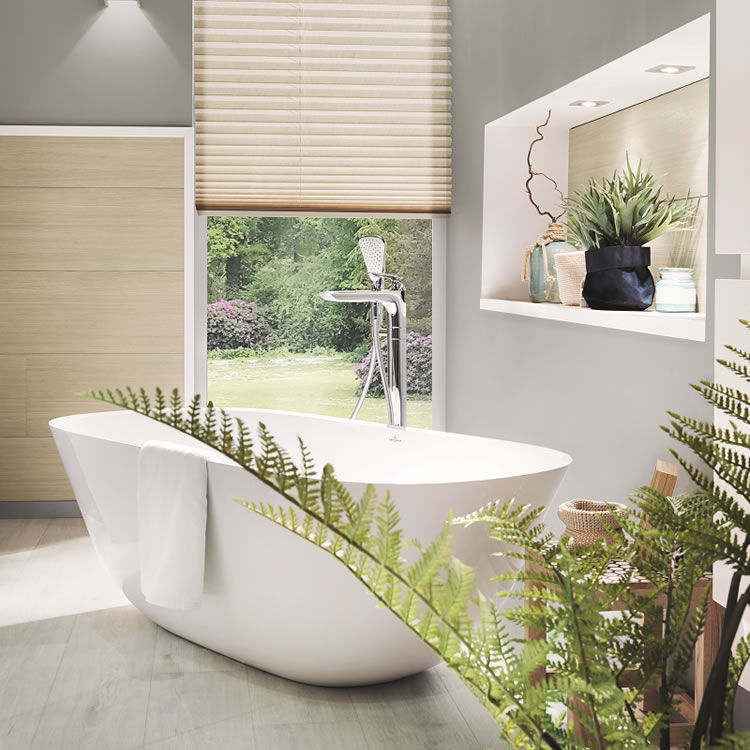
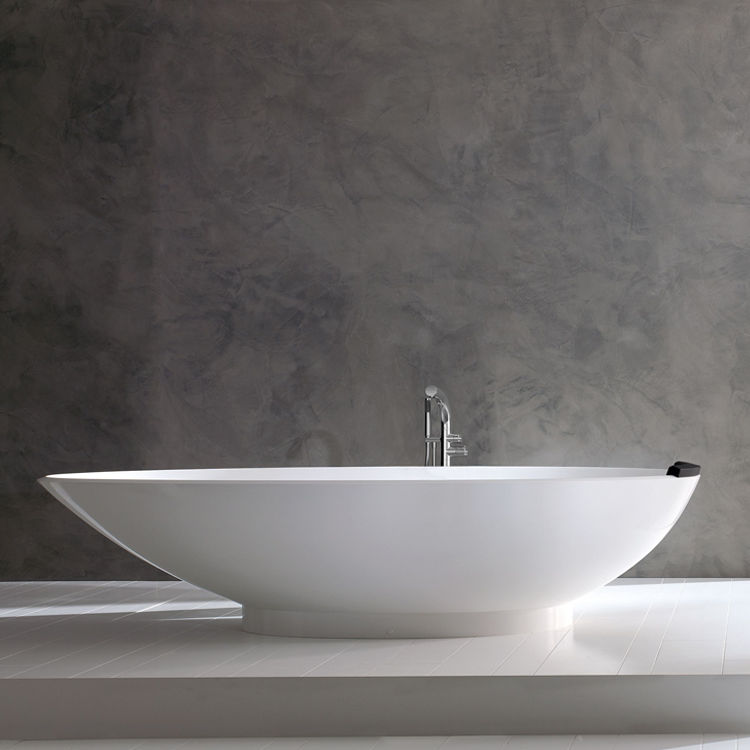
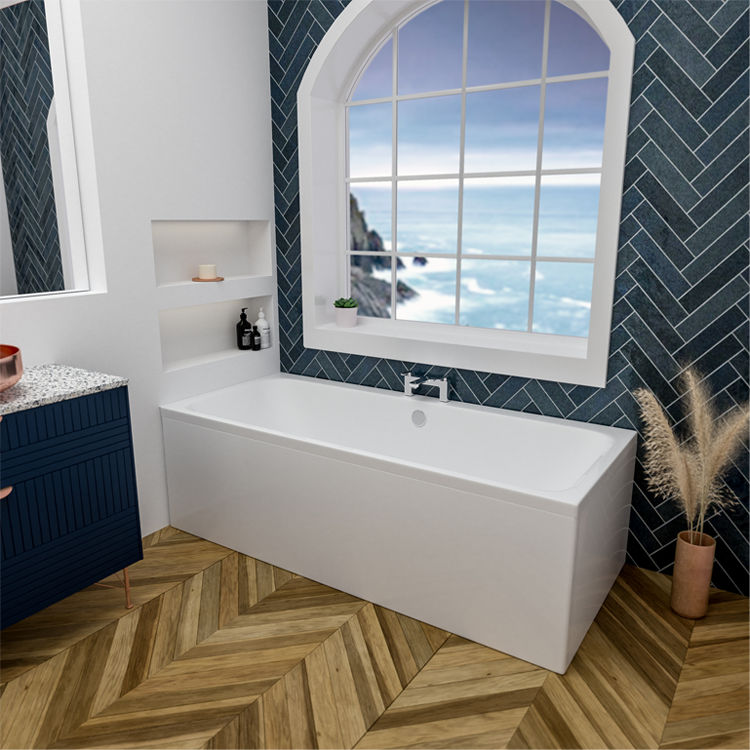

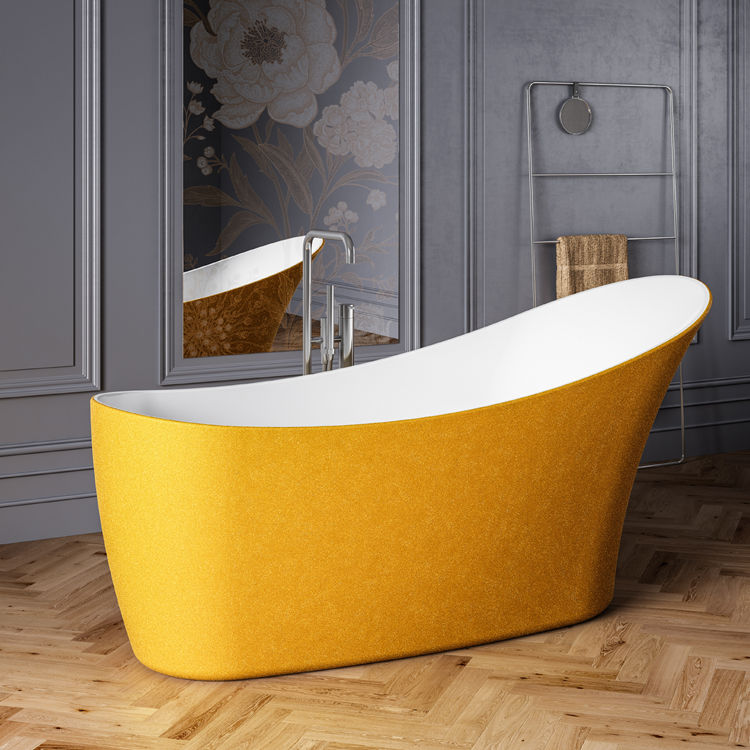
Where Can I Buy A New Bath?
Here, of course! We supply a fantastic range of baths on our website, and we are constantly adding to our range from new manufacturers, available at a wide variety of price points.
If any help is required in selecting a bath, get in touch with a member of our team, or book a 3D Bathroom Design Appointment to bring a bathroom to life, and see how a bathtub would look in your space.
